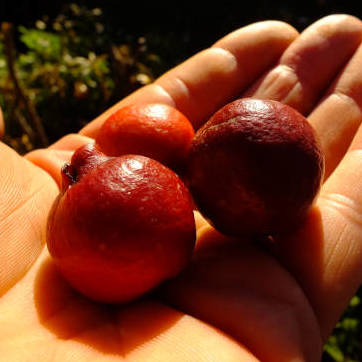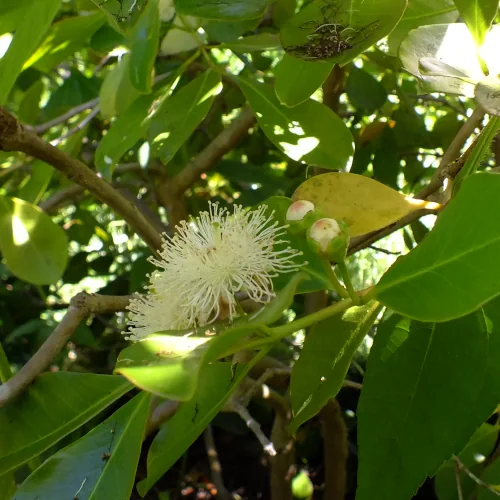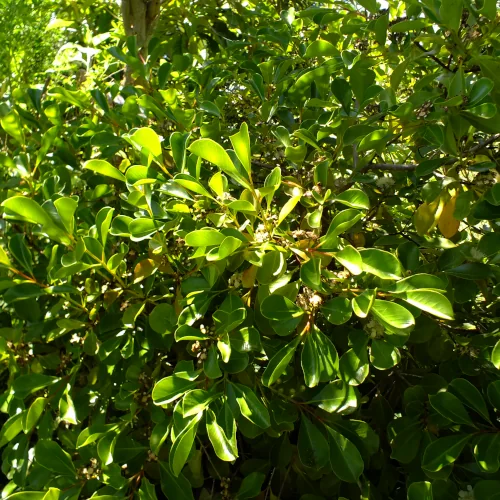Red Cherry Guava (Psidium cattleyanum var. littorale)
The Red Cherry Guava, also known as Strawberry Guava, is a hardy, evergreen shrub or small tree native to South America. It produces small, round, deep-red fruit with a sweet, aromatic flavour reminiscent of strawberries and guavas. The glossy, dark green leaves and attractive peeling bark make it an excellent addition to a forest garden, providing both beauty and functionality.
Propagation
Red Cherry Guava can be propagated by:
- Seeds: Fresh seeds germinate well but may take several weeks to sprout. Soaking them overnight before planting improves germination rates. Seed-grown plants take 3–5 years to fruit.
- Cuttings: Semi-hardwood cuttings taken in summer (December–February) can root successfully with the use of rooting hormone and high humidity.
- Layering: Air layering or ground layering is another effective method, encouraging faster fruiting than seed propagation.
Cultivation
Climate & Location
- Grows well in warm temperate to subtropical climates and tolerates light frosts.
- Prefers full sun to partial shade but produces the best fruit in a sunny position.
- Thrives in well-drained, fertile soil with a slightly acidic to neutral pH (5.5–7.0).
- Drought-tolerant once established but benefits from regular watering, especially in dry periods.
Planting & Care
- Space trees 2–4 metres apart to allow for spreading branches.
- Mulch well to retain moisture and suppress weeds.
- Prune after fruiting (late autumn) to maintain shape and encourage new growth.
- Protect young plants from heavy frost with frost cloth or overhead cover.
Harvesting
- Fruits ripen from late summer to autumn (February–May in the Southern Hemisphere).
- Pick when fully red and slightly soft for the best flavour.
- Fruit is highly perishable but can be stored in the fridge for a few days.
Uses & Benefits
Culinary Uses
- Eaten fresh or added to salads, desserts, and smoothies.
- Used in jams, jellies, syrups, and sauces due to its naturally high pectin content.
- Can be fermented into wines, liqueurs, or vinegar.
Nutritional & Medicinal Benefits
- Rich in vitamin C, antioxidants, and dietary fibre.
- Supports immune function and digestive health.
- Leaves have antibacterial properties and can be brewed into herbal tea.
Wildlife & Ecological Benefits
- Attracts bees, butterflies, and birds, supporting pollinators and biodiversity.
- Provides shelter and food for small animals in a forest garden ecosystem.
Role in a Forest Garden
Red Cherry Guava is an excellent understory or mid-canopy plant in a food forest. Its evergreen foliage offers year-round greenery, while its fruit feeds both humans and wildlife. The tree’s drought tolerance and adaptability make it a resilient choice for sustainable gardening. Additionally, it can be used as a windbreak or privacy screen, contributing to the overall health and diversity of the forest garden system.



